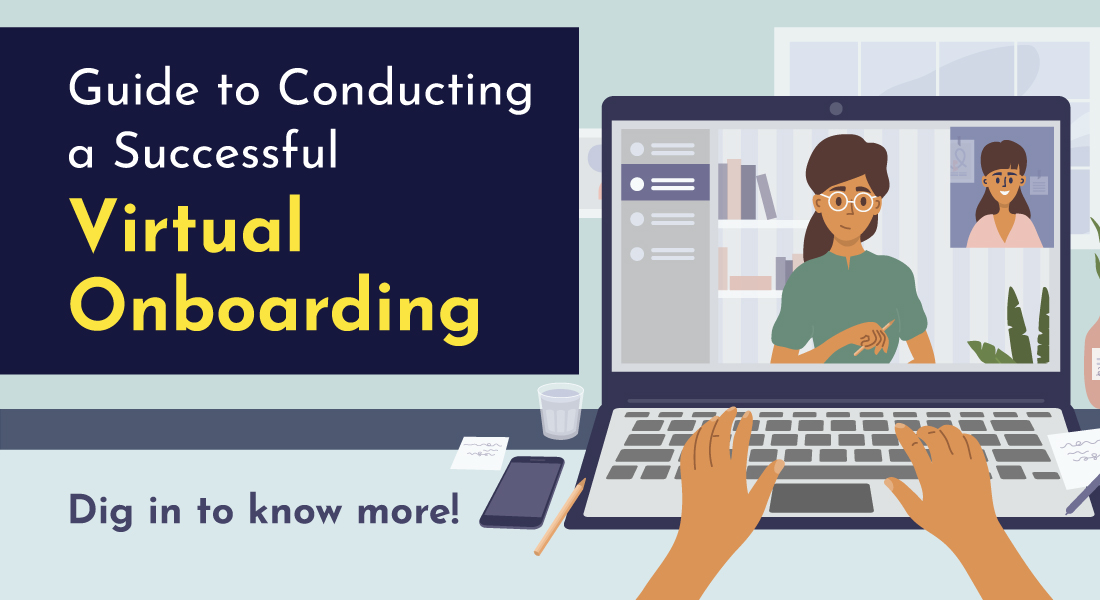How Can E-Learning Be Part of Onboarding?

In today’s business landscape, employees and organizations are becoming increasingly opportunistic when it comes to their working preferences. For a company, this essentially means that there will always be an inflow of new employees, experienced or otherwise. All of them will need some form of onboarding to successfully integrate into the fiber of your organization.
Onboard training plays an important role in molding the perceptions of your new employees about your organization. It gives a glimpse of the work culture of your company and creates an impactful first impression. An effective onboarding program gives new employees a firm direction to move ahead. This takes them out of the initial ‘limbo’ phase and helps them get productive at a much faster rate.
E-learning programs can help you undo the tangle of onboarding new employees. They provide a scalable, cost-effective, and easy way to get employees up and running in their new workplace. Let’s explore some benefits an e-learning program can bring to your onboarding process:
Video-Based Modules for Brand Presentation
When new employees arrive in your organization, they might have only a faint idea about your company. You can quickly change this by conveying your company’s core values through short and comprehensive video modules. Take your new employees through the history and legacy of your organization through engrossing animated videos.
Using video greatly reduces the time it takes to convey a huge chunk of information, which helps reduce the overall onboarding time and makes employees productive faster. A good video-based brand presentation prepares the minds of your employees with what the company expects from them.
Blended Learning for Orientation
Orienting your employees about their roles and responsibilities in the organization is very important as it avoids confusion. For orientation, you can use a blended learning approach to give your new employees the best of two different training methods.
With an instructor-led session, you can strongly highlight the importance of their responsibilities and roles. With a digital training session, you can elaborate the actual work they would be performing on a day-to-day basis.
Simulations for System Awareness
Any organization uses an array of software applications for their operations. For new joiners, getting a hang of your complicated systems might take a lot of time. On top of this, your new employees can’t afford to make a single mistake, as your systems are live and can have real-world ramifications. This is where you can use software simulations to train employees to use your tools properly.
This e-learning strategy can give your employees a first-hand experience of using the tools, while preventing them from causing any real-world disturbances.
Scenarios for Role Activation
You might have conveyed the role your new employee is going to perform, but there could still be lingering doubts over the practical scenarios in which their role will be put to use. Clear this up by a scenario-based e-learning module. This e-learning method recreates your actual work environment using interactive characters, immersive dialogues, and relatable backgrounds.
When new employees get an accurate visual representation of their roles and the work environment, they automatically become more aligned with their jobs.
Micro Modules for Critical Support
Even after providing a lot of training, chances are that new employees can still get stuck. After all, the initial period of working in any new place can get overwhelming. So reinforce all onboarding with robust microlearning modules. These bite-sized learning nuggets provide your new employees with the much needed just-in-time performance support.
In case an employee forgets how to perform a critical activity, he can quickly refer to a micro module and refresh his knowledge. This greatly reduces the learning curve, and increases employee efficiency.
Using e-learning for onboarding is a hassle-free and a more efficient alternative than the traditional method. Just ensure that you hire an experienced e-learning vendor to make sure the first e-learning course your new employees take is memorable.




![How to Engage New Hires During Compliance Training? [Revealed]](https://blog.commlabindia.com/hubfs/blogs/compliance-training-training-new-employees-engagement.jpg)
